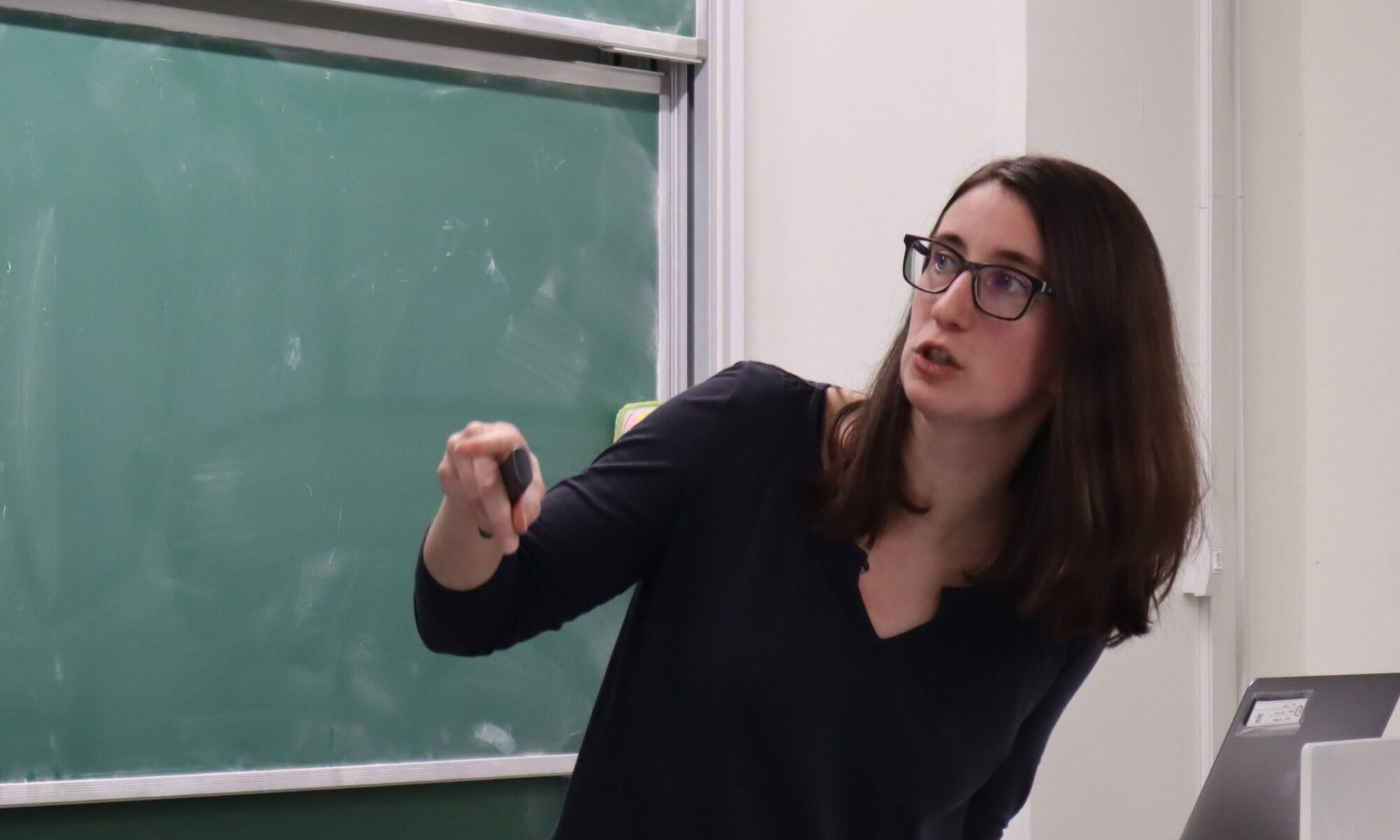On January 17, 2023, Noleen Köhler from the LAMSADE, CNRS gave a talk at the Discrete Math Seminar on classes of graphs on which the first order model checking is FPT on its subclass if and only if the twin-width is bounded. The title of her talk was “Twin-Width VIII: Delineation and Win-Wins“.
Noleen Köhler, Twin-Width VIII: Delineation and Win-Wins
We introduce the notion of delineation. A graph class $\mathcal C$ is said delineated by twin-width (or simply, delineated) if for every hereditary closure $\mathcal D$ of a subclass of $\mathcal C$, it holds that $\mathcal D$ has bounded twin-width if and only if $\mathcal D$ is monadically dependent. An effective strengthening of delineation for a class $\mathcal C$ implies that tractable FO model checking on $\mathcal C$ is perfectly understood: On hereditary closures of subclasses $\mathcal D$ of $\mathcal C$, FO model checking on $\mathcal D$ is fixed-parameter tractable (FPT) exactly when $\mathcal D$ has bounded twin-width. Ordered graphs [BGOdMSTT, STOC ’22] and permutation graphs [BKTW, JACM ’22] are effectively delineated, while subcubic graphs are not. On the one hand, we prove that interval graphs, and even, rooted directed path graphs are delineated. On the other hand, we observe or show that segment graphs, directed path graphs (with arbitrarily many roots), and visibility graphs of simple polygons are not delineated.
In an effort to draw the delineation frontier between interval graphs (that are delineated) and axis-parallel two-lengthed segment graphs (that are not), we investigate the twin-width of restricted segment intersection classes. It was known that (triangle-free) pure axis-parallel unit segment graphs have unbounded twin-width [BGKTW, SODA ’21]. We show that $K_{t,t}$-free segment graphs, and axis-parallel $H_t$-free unit segment graphs have bounded twin-width, where $H_t$ is the half-graph or ladder of height $t$. In contrast, axis-parallel $H_4$-free two-lengthed segment graphs have unbounded twin-width. We leave as an open question whether unit segment graphs are delineated.
More broadly, we explore which structures (large bicliques, half-graphs, or independent sets) are responsible for making the twin-width large on the main classes of intersection and visibility graphs. Our new results, combined with the FPT algorithm for first-order model checking on graphs given with $O(1)$-sequences [BKTW, JACM ’22], give rise to a variety of algorithmic win-win arguments. They all fall in the same framework: If $p$ is an FO definable graph parameter that effectively functionally upperbounds twin-width on a class C, then $p(G) \ge k$ can be decided in FPT time $f(k)\cdot |V (G)|O(1)$. For instance, we readily derive FPT algorithms for k-Ladder on visibility graphs of 1.5D terrains, and k-Independent Set on visibility graphs of simple polygons. This showcases that the theory of twin-width can serve outside of classes of bounded twin-width.
Joint work with Édouard Bonnet, Dibyayan Chakraborty, Eun Jung Kim, Raul Lopes and Stéphan Thomassé.
Noleen Köhler gave a talk on the comparision of testable properties on graphs of bounded maximum degree and properties expressible by the first-order logic at the Discrete Math Seminar
On August 16, 2022, Noleen Köhler from the CNRS, LAMSADE gave a talk at the Discrete Math Seminar on comparing testable properties on graphs of bounded maximum degree and properties expressible by the first-order logic. The title of her talk was “Testing first-order definable properties on bounded degree graphs“. She is currently visiting the IBS Discrete Mathematics Group from August 6 to August 26.
Noleen Köhler, Testing first-order definable properties on bounded degree graphs
Property testers are probabilistic algorithms aiming to solve a decision problem efficiently in the context of big-data. A property tester for a property P has to decide (with high probability correctly) whether a given input graph has property P or is far from having property P while having local access to the graph. We study property testing of properties that are definable in first-order logic (FO) in the bounded-degree model. We show that any FO property that is defined by a formula with quantifier prefix ∃*∀* is testable, while there exists an FO property that is expressible by a formula with quantifier prefix ∀*∃* that is not testable. In the dense graph model, a similar picture is long known (Alon, Fischer, Krivelevich, Szegedy, Combinatorica 2000), despite the very different nature of the two models. In particular, we obtain our lower bound by a first-order formula that defines a class of bounded-degree expanders, based on zig-zag products of graphs.
This is joint work with Isolde Adler and Pan Peng.



